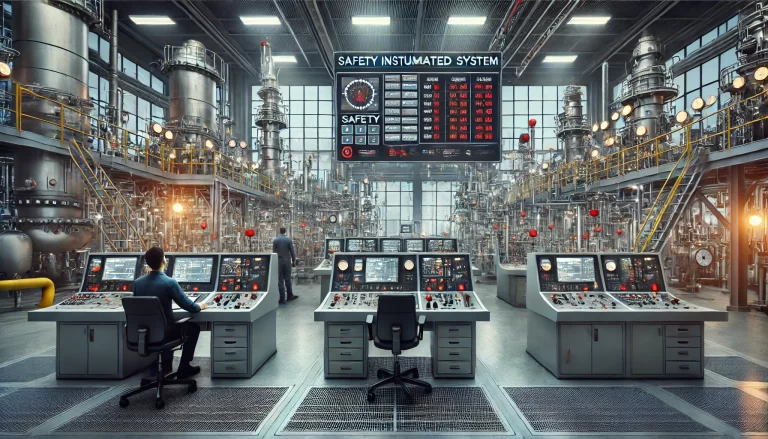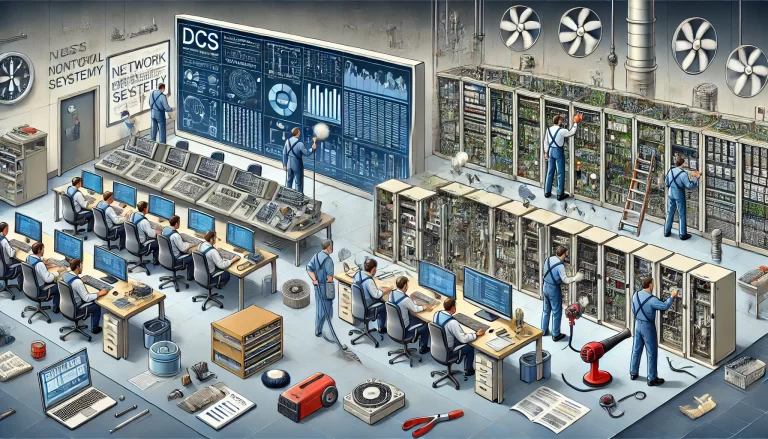1. Introduction
The concept of Safety Integrity Level (SIL) is fundamental in functional safety, particularly in industries where safety-critical processes are involved. SIL1, the lowest safety integrity level as defined by IEC 61508/IEC 61511 standards, requires basic safety measures to mitigate risks of low-severity consequences. Distributed Control Systems (DCS) are primarily designed for process control and optimization but have evolved to include certain safety functionalities. This paper examines the feasibility of implementing SIL1 interlocks within a DCS environment.

2. Understanding SIL1 Requirements
SIL1 is characterized by moderate risk reduction requirements. Systems at this level must manage failures that could lead to minor injuries or equipment damage but are not typically life-threatening. The key requirements for achieving SIL1 include:
Basic Fault Detection: The system must detect and respond to faults effectively.
Limited Redundancy: High levels of redundancy are not mandatory, simplifying system architecture.
Periodic Testing: Regular testing ensures the reliability and availability of safety functions.
Compliance with IEC Standards: Adherence to IEC 61508/61511 ensures systematic and random hardware failures are managed appropriately.

3. DCS Characteristics and Capabilities
DCS platforms are designed to provide high availability, continuous process control, and efficient data handling. Modern DCS platforms, such as Emerson DeltaV, Siemens PCS 7, and ABB 800xA, integrate basic safety features, including:
Fault Detection and Alarming: DCS systems can identify process anomalies and trigger alarms.
Process and Equipment Interlocks: DCS can handle process-based interlocks for operational safety.
Advanced Diagnostics: Enhanced diagnostics support fault detection and system health monitoring.
However, traditional DCS systems are not inherently designed for high-integrity safety functions, unlike Safety Instrumented Systems (SIS).
4. Conditions for Implementing SIL1 in DCS
For a DCS to effectively implement SIL1 interlocks, several design and operational conditions must be met:
4.1 Hardware and Software Design
Certified Components: Use of hardware and software certified for SIL1 applications, ensuring compliance with IEC standards.
Simplified Logic Design: Avoidance of complex interlock logic to reduce potential faults.
Redundant I/O Modules (Optional): Basic redundancy can be implemented for critical signals to enhance reliability.
4.2 Reliable Data Transmission
Robust Communication Protocols: Utilizing protocols like PROFIBUS or FOUNDATION Fieldbus ensures accurate and secure signal transmission.
Data Integrity Checks: Implementation of integrity verification mechanisms for critical data.
4.3 Logic Design and Validation
Transparent Logic Implementation: Clear and well-documented interlock logic minimizes errors.
Functional Testing: Regular loop testing and simulation to validate correct interlock actions.
Change Management: Controlled updates to logic to prevent unintended behavior.
4.4 Maintenance and Diagnostics
Self-Diagnostic Functions: Integration of diagnostic tools to detect and report faults.
Scheduled Maintenance: Periodic proof testing to confirm functional reliability.
Operator Training: Ensuring personnel are trained to manage and respond to system diagnostics.
4.5 Functional Safety Assessment
Risk Analysis: Conducting thorough risk assessments to justify the use of DCS for SIL1 interlocks.
Verification and Validation: Comprehensive testing to ensure the system meets safety requirements.
Documentation and Compliance: Maintaining detailed documentation to demonstrate compliance with safety standards.

5. Comparison Between DCS and SIS
While DCS can handle SIL1 and potentially SIL2 interlocks, it is important to distinguish its capabilities from those of a dedicated SIS:
SIL1/2 Feasibility: DCS is suitable for low to moderate risk reduction levels.
Higher SIL Levels: For SIL2 and above, dedicated SIS platforms (e.g., Triconex, HIMA) are recommended due to their robust safety architectures.
Cost and Complexity: Implementing SIL1 in DCS is more cost-effective and less complex than deploying a full SIS.

6. Conclusion
Implementing SIL1 interlocks within a DCS is not only feasible but can also be efficient for processes with lower safety risks. By ensuring compliance with relevant standards and adopting best practices in system design, validation, and maintenance, DCS platforms can effectively provide the required safety functionality for SIL1 applications. However, for higher safety integrity levels, a dedicated SIS should be considered to achieve the necessary risk reduction and system reliability.
